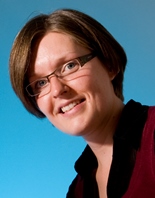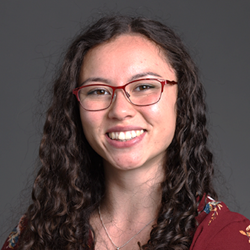Emily

Name: Emily
Job Title: Senior Microelectronics Design Specialist
My degree
I studied for an MEng in Electrical & Electronic Engineering at the University of Bristol, spending my third year on an Erasmus exchange in Paris at Télécom ParisTech. After graduation in 2008, I came to work for STFC at the Rutherford Appleton Laboratory, where I joined the Microelectronics Centre.
Why I chose a career in science/engineering/technology
Although I enjoyed physics and maths at school, I chose engineering because I love the challenge of designing and creating things that solve problems. I specifically chose electronics because it is so pervasive – there are chips in everything around us, from the washing machine to the mobile phone, all the way up to massive particle accelerators like the LHC at CERN. The possibility of being able to say ‘I helped make that’ about something that everybody could identify was something that appealed to me a lot.
What I do do on an “average” day in my current job
The group I work in, the Microelectronics Centre, provides design guidance and assistance in the use of electronic design automation (EDA) tools to over 650 academic institutions throughout Europe. My experience is in analogue and mixed-signal integrated circuit design, but as I am responsible for managing all the tools from one vendor, covering a wide range of technologies and design styles, I need to have a good overview of the different areas.
So my days vary quite a bit. I might be travelling to a different country for meetings with colleagues and partners discussing new tools we’d like to offer to the universities to try and stimulate a particular design methodology, or writing training material to deliver to our users on one of our in-house courses. I might be working on a design example that demonstrates how to use the latest features in the tools we offer, or I’ll be up in our training suite giving lectures and lab demonstrations. Often I’ll be at my desk answering enquiries from one of our many users about how they can get the best out of the tools to meet their challenging design needs, or experimenting with the software to test its capabilities.
It’s a rewarding job solving difficult problems and it’s great to receive the emails that say ‘we just taped out our chip, we couldn’t have done it without your help’. It’s interesting because of the diversity of technologies and designs I’m involved in, without being limited to a narrowly focused type of design. I am lucky to have unparalleled training, as staying at the leading edge is central to my ability to perform my job.
Outside of work
When I’m not working, I’m usually trying to cram in a bit of practice with the covers band that I play bass for, fixing my bike so I can go on a nice long ride, crashing through the woods at an orienteering event, or sharing a piece of cake with some friends.
View other engineer profiles

Payal
Mixed Signal Verification Engineer
The emphasis on women’s empowerment and the inclusion of junior engineers’ voices in decision-making processes reflects the company’s dedication to nurturing future talent and driving progress through diversity.

Paolo
Software Toolchain Engineer
I had heard about Embecosm as an authority in the field of compiler programming and decided that it would be an excellent opportunity to gain competence in a niche but very well regarded field in software and hardware.

Elisa-Jayne
Consultant Electronics Engineer
"I was thrilled to find some of the technology I had worked on during my internship had progressed to later stages of the development cycle, and some of the products I had contributed to were being used by clients and patients."